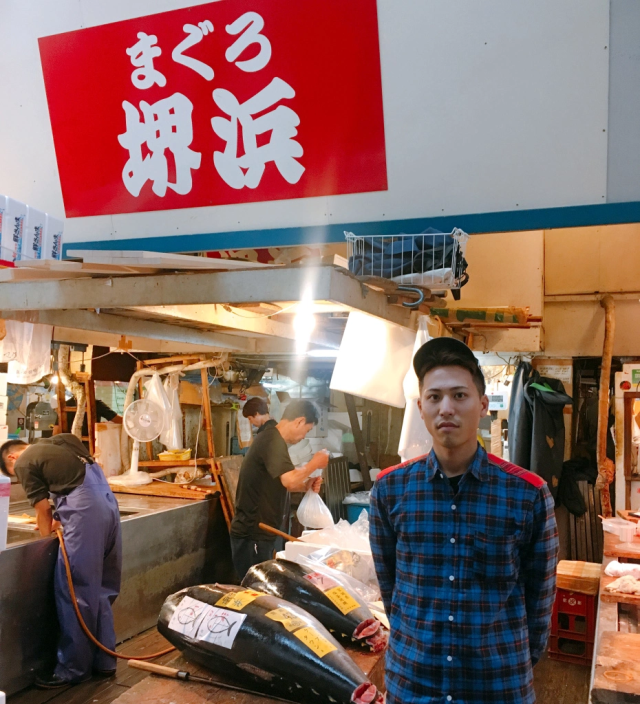
After more than 80 years, Tokyo’s world-famous fish market is relocating, but the head of this 104-year-old wholesaler has one concern.
October 6 marked the end of an era. Since 1935, Tokyo’s Tsukiji fish market had been Japan’s premiere site for seafood sales, but after more than 80 years in business, the facility’s wholesale operations have closed down.
While Tsukiji’s outer market and restaurants remain open, the wholesalers are in the midst of moving farther east to the Toyosu neighborhood, echoing the relocation of Tokyo’s largest fish market from the Nihonbashi district to Tsukiji which took place in the 1930s. Before the big move, we stopped by Tsukiji for one last visit, and to talk with the head of a seafood supplier that’s been in business for over 100 years.
▼ The entrance to Tsukiji’s inner market on October 5
Katsuyuki Hosokawa is the managing director of Nariichi Sakahama. Founded in 1914, his company specializes in tuna (or maguro, as it’s called in Japanese), and the opening of the new market in Toyosu means the company is pulling up its roots following decades in Tsukiji. It was still before noon when we arrived at Nariichi Sakahama’s stall, but the company had already concluded its sales for the day.
▼ Tuna from Miyagi Prefecture (top) and South Africa (bottom)
But the early closing time didn’t mean the company was taking it easy. “I think every wholesaler is in the same position, but we’re swamped with orders right now,” said Hosokawa. Though the Tsukiji market shut down on October 6, the Toyosu replacement won’t open until the 11th, since many of the merchants are small businesses that can’t make the move in a single night. “The market has never been shut down for four days in a row before,” Hosokawa explained, “so we’re flooded with orders from restaurants that need enough fish to tide them over during the transition.”
But at least once everyone is settled in at Toyosu, it’ll be back to business as usual, right? If anything, having a brand-new facility should make work flow even smoother than it did before, shouldn’t it?
Maybe. While more modern buildings and a location that’s less convenient for distracting tourists should contribute to smoother business-to-business sales, Hosokawa has already spotted one potential problem with the not-even-opened-yet Toyosu market.
“There aren’t enough parking spaces,” he said. “Just for the people who will be working at the market, it probably needs about 200 more parking spaces than are planned. For our line of work, people have to show during the middle of the night, and at least before dawn. We sometimes have people coming to our shop at between midnight and one in the morning, and it’s not like they can use public transportation, because the train stop running before that.”
It’s not just workers Hosokawa is concerned about either. Tsukiji is just a short drive from Tokyo’s swanky Ginza neighborhood, and Hosokawa says many buyers from Ginza’s upscale restaurants would come by car to the Tsukiji market to acquire choice cuts of fish to serve to their discerning customers as sushi or sashimi. “If there aren’t enough parking spaces even for workers at the Toyosu market, customers who come by car are going to have to pay to park in a lot,” he said, and he’s worried that this may dissuade some regular customers from continuing with their regular buying habits. “I’m really not sure how it’s going to be once the new market opens.”
▼ Nariichi Sakahama’s Tsukiji stall
Ready or not, though, the Toyosu market opens on October 11.
Photos ©SoraNews24
[ Read in Japanese ]

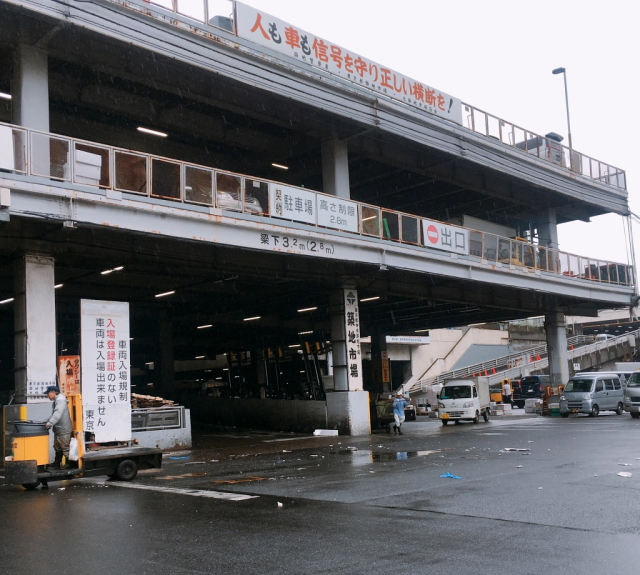
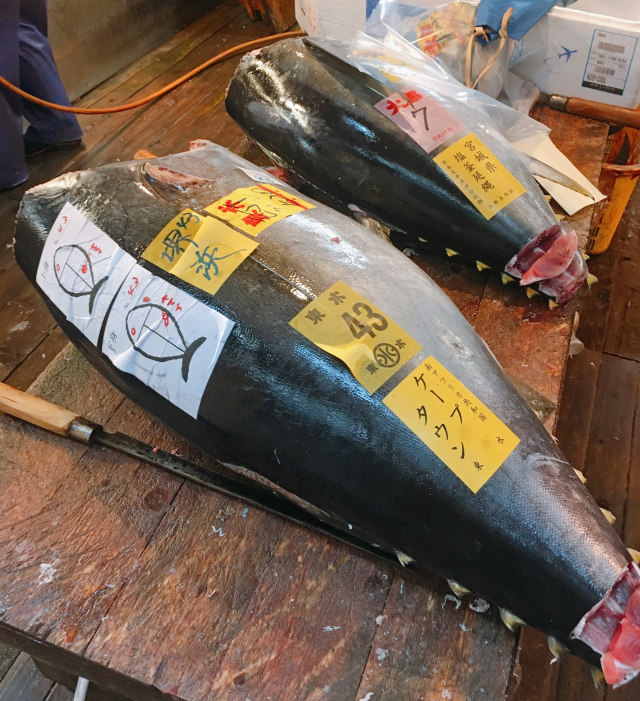
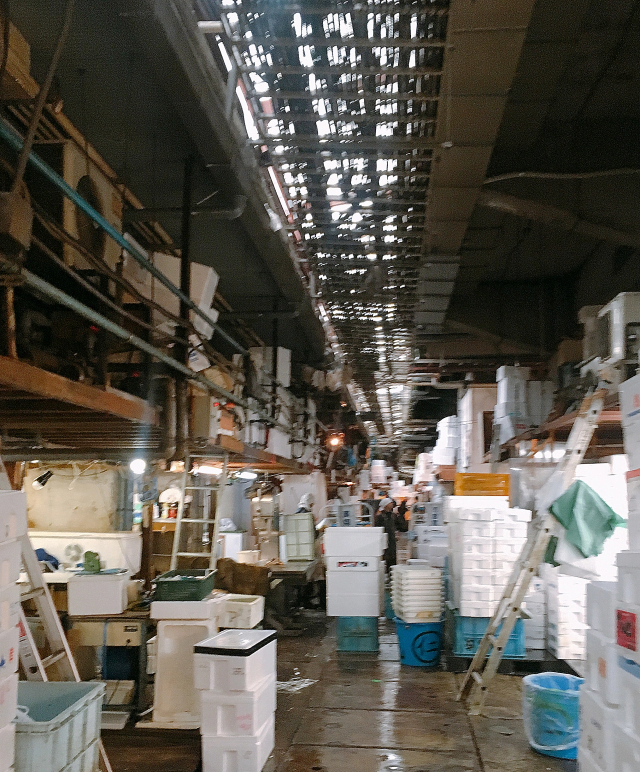
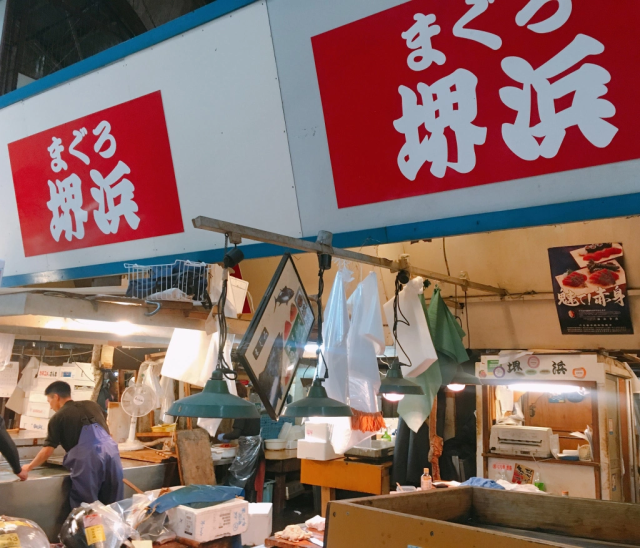
 With its Inner Market closed down, we stop by Tsukiji to see how Tokyo’s sushi mecca is coping
With its Inner Market closed down, we stop by Tsukiji to see how Tokyo’s sushi mecca is coping Tokyo braces for potential rat infestation as Tsukiji fish market closes
Tokyo braces for potential rat infestation as Tsukiji fish market closes Restaurants, Roads, Rats: How has Tsukiji changed after the fish market move?
Restaurants, Roads, Rats: How has Tsukiji changed after the fish market move? Sushi Dai and other famous restaurants from Tsukiji fish market open at new Toyosu location
Sushi Dai and other famous restaurants from Tsukiji fish market open at new Toyosu location Tokyo’s newest hot spring bathhouse and foodie spot opening next to Japan’s biggest fish market
Tokyo’s newest hot spring bathhouse and foodie spot opening next to Japan’s biggest fish market Red light district sushi restaurant in Tokyo shows us just how wrong we were about it
Red light district sushi restaurant in Tokyo shows us just how wrong we were about it Japanese ramen restaurants under pressure from new yen banknotes
Japanese ramen restaurants under pressure from new yen banknotes Sandwiches fit for a sumo served up in Osaka【Taste Test】
Sandwiches fit for a sumo served up in Osaka【Taste Test】 McDonald’s new Happy Meals offer up cute and practical Sanrio lifestyle goods
McDonald’s new Happy Meals offer up cute and practical Sanrio lifestyle goods Our top 3 cafes in Azabudai Hills, Tokyo’s newest and possibly swankiest shopping complex
Our top 3 cafes in Azabudai Hills, Tokyo’s newest and possibly swankiest shopping complex French Fries Bread in Tokyo’s Shibuya becomes a hit on social media
French Fries Bread in Tokyo’s Shibuya becomes a hit on social media How to fix damaged trading cards quickly and easily
How to fix damaged trading cards quickly and easily Starbucks Japan adds a Motto Frappuccino to the menu for a limited time
Starbucks Japan adds a Motto Frappuccino to the menu for a limited time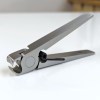 Expensive Japanese nail clippers: Are they worth it?
Expensive Japanese nail clippers: Are they worth it? Randomly running into a great sushi lunch like this is one of the best things about eating in Tokyo
Randomly running into a great sushi lunch like this is one of the best things about eating in Tokyo All-you-can-drink Starbucks and amazing views part of Tokyo’s new 170 meter-high sky lounge
All-you-can-drink Starbucks and amazing views part of Tokyo’s new 170 meter-high sky lounge More foreign tourists than ever before in history visited Japan last month
More foreign tourists than ever before in history visited Japan last month Studio Ghibli releases new action figures featuring Nausicaä of the Valley of the Wind characters
Studio Ghibli releases new action figures featuring Nausicaä of the Valley of the Wind characters New private rooms on Tokaido Shinkansen change the way we travel from Tokyo to Kyoto
New private rooms on Tokaido Shinkansen change the way we travel from Tokyo to Kyoto Starbucks reopens at Shibuya Scramble Crossing with new look and design concept
Starbucks reopens at Shibuya Scramble Crossing with new look and design concept Studio Ghibli glasses cases let anime characters keep an eye on your spectacles
Studio Ghibli glasses cases let anime characters keep an eye on your spectacles Beautiful Ghibli sealing wax kits let you create accessories and elegant letter decorations【Pics】
Beautiful Ghibli sealing wax kits let you create accessories and elegant letter decorations【Pics】 Studio Ghibli releases Kiki’s Delivery Service chocolate cake pouches in Japan
Studio Ghibli releases Kiki’s Delivery Service chocolate cake pouches in Japan New definition of “Japanese whiskey” goes into effect to prevent fakes from fooling overseas buyers
New definition of “Japanese whiskey” goes into effect to prevent fakes from fooling overseas buyers Our Japanese reporter visits Costco in the U.S., finds super American and very Japanese things
Our Japanese reporter visits Costco in the U.S., finds super American and very Japanese things Studio Ghibli unveils Mother’s Day gift set that captures the love in My Neighbour Totoro
Studio Ghibli unveils Mother’s Day gift set that captures the love in My Neighbour Totoro New Japanese KitKat flavour stars Sanrio characters, including Hello Kitty
New Japanese KitKat flavour stars Sanrio characters, including Hello Kitty New Pokémon cakes let you eat your way through Pikachu and all the Eevee evolutions
New Pokémon cakes let you eat your way through Pikachu and all the Eevee evolutions Disney princesses get official manga makeovers for Manga Princess Cafe opening in Tokyo
Disney princesses get official manga makeovers for Manga Princess Cafe opening in Tokyo Sales of Japan’s most convenient train ticket/shopping payment cards suspended indefinitely
Sales of Japan’s most convenient train ticket/shopping payment cards suspended indefinitely Sold-out Studio Ghibli desktop humidifiers are back so Totoro can help you through the dry season
Sold-out Studio Ghibli desktop humidifiers are back so Totoro can help you through the dry season Japanese government to make first change to romanization spelling rules since the 1950s
Japanese government to make first change to romanization spelling rules since the 1950s Ghibli founders Toshio Suzuki and Hayao Miyazaki contribute to Japanese whisky Totoro label design
Ghibli founders Toshio Suzuki and Hayao Miyazaki contribute to Japanese whisky Totoro label design Doraemon found buried at sea as scene from 1993 anime becomes real life【Photos】
Doraemon found buried at sea as scene from 1993 anime becomes real life【Photos】 Tokyo’s most famous Starbucks is closed
Tokyo’s most famous Starbucks is closed One Piece characters’ nationalities revealed, but fans have mixed opinions
One Piece characters’ nationalities revealed, but fans have mixed opinions We asked a Uniqlo employee what four things we should buy and their suggestions didn’t disappoint
We asked a Uniqlo employee what four things we should buy and their suggestions didn’t disappoint Princesses, fruits, and blacksmiths: Study reveals the 30 most unusual family names in Japan
Princesses, fruits, and blacksmiths: Study reveals the 30 most unusual family names in Japan How to choose a great block of sashimi-grade tuna – 66-year maguro master shares his protips
How to choose a great block of sashimi-grade tuna – 66-year maguro master shares his protips Bluefin tuna fish sells for bargain low price of roughly US$200,000 in Tokyo auction
Bluefin tuna fish sells for bargain low price of roughly US$200,000 in Tokyo auction Yaizu: Japan’s best sushi market destination even most foodies in Japan have never heard of
Yaizu: Japan’s best sushi market destination even most foodies in Japan have never heard of Huge fire breaks out at Tokyo’s world-famous Tsukiji Fish Market【Videos, photos】
Huge fire breaks out at Tokyo’s world-famous Tsukiji Fish Market【Videos, photos】 Tsukiji alternative – Tokyo has a second fish market, and it turns out it’s awesome too
Tsukiji alternative – Tokyo has a second fish market, and it turns out it’s awesome too Beef bowl chain Yoshinoya’s historic first store to close, special countdown site launched!
Beef bowl chain Yoshinoya’s historic first store to close, special countdown site launched! Beware the rise of overpriced “Inbound Don” at tourist spots in Japan
Beware the rise of overpriced “Inbound Don” at tourist spots in Japan Tokyo’s sushi spirit shrine, where the souls of seafood slumber
Tokyo’s sushi spirit shrine, where the souls of seafood slumber Huge tuna fish sells for a whopping 190 million yen at the first wholesale auction of the year
Huge tuna fish sells for a whopping 190 million yen at the first wholesale auction of the year This 7-Eleven convenience store causes a buzz with foreigners online
This 7-Eleven convenience store causes a buzz with foreigners online Tokyo restaurant wins prized tuna at New Year auction for 114.2 million yen and serves it up to customers
Tokyo restaurant wins prized tuna at New Year auction for 114.2 million yen and serves it up to customers Beef and sashimi in the same rice bowl: Brilliance or blasphemy? We find out【Taste test】
Beef and sashimi in the same rice bowl: Brilliance or blasphemy? We find out【Taste test】 Mr. Sato attacks a massive castle of seafood at a new restaurant in Tokyo Skytree’s Solamachi
Mr. Sato attacks a massive castle of seafood at a new restaurant in Tokyo Skytree’s Solamachi Japanese netizens support foreign comic after one Japanese man’s discriminatory remark
Japanese netizens support foreign comic after one Japanese man’s discriminatory remark Rare ghost-white tuna caught off Bali — we go to see it on display in Shibuya!
Rare ghost-white tuna caught off Bali — we go to see it on display in Shibuya! Ginza hotel serves up one of the best breakfasts in Tokyo
Ginza hotel serves up one of the best breakfasts in Tokyo
Leave a Reply